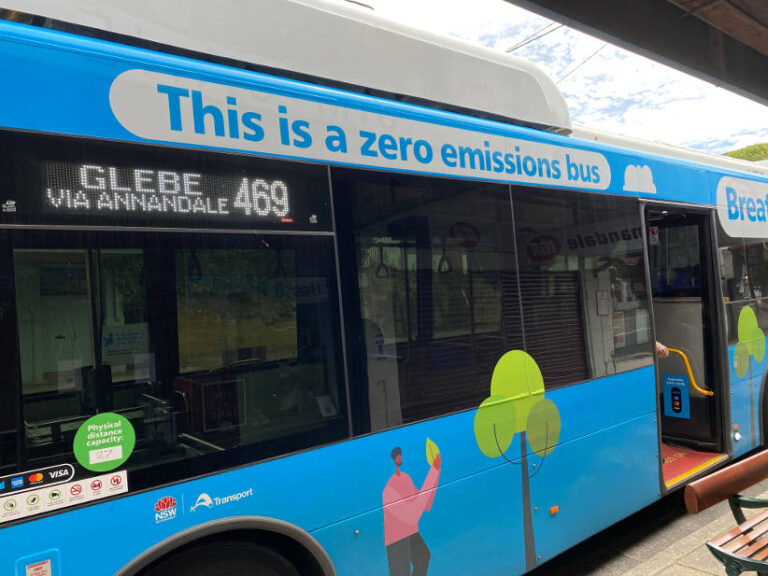In September of this year, the National Transport commission released a report evaluating the implementation of zero emissions buses (ZEB) throughout Australian jurisdictions, with the purpose of sharing lessons learned in bus trials to date, and assessing regulation, funding opportunities and challenges that have presented themselves thus far. The comprehensive 52 page report is available in full on www.ntc.gov.au, and below is a summary of the points most relevant to fleet operators looking to transition their buses to electric.
Australia currently lags behind other countries in electric bus uptake, where adoption is led by China, who deploy 98% of electric buses in the world. In Australia, NSW leads with over 100 electric buses to date, and each state and territory has individual targets and funding commitments to both trial and implement transition to buses which are either battery electric vehicle (BEV), Hybrid electric vehicle (HEV), or Hydrogen fuel cell electric vehicles (FCEV).
Each jurisdiction is at a different point in planning and implementation, and a detailed summary of the current state of play is available in the report. However, the report notes that current adoption rates are unlikely to meet net zero bus emissions goals by 2030, hampered by a lack of national policy, a shortage of local expertise, constrained supply, and the challenges of upgrading depot infrastructure.
Globally Hydrogen fuel cell (FCEV) bus adoption has been much slower as development of green hydrogen production and refuelling infrastructure has been slow, but due to the fast refuelling and turnaround allowed by FCEV, hydrogen is still very much on the agenda. Currently trials are underway in Victoria, New South Wales, Tasmania and South Australia for FCEV buses.
Surveys of public users and industry reflect well on BEV buses, citing a smoother ride, low environmental impact, and quieter vehicles. While the purchase cost of an electric bus is roughly double that of a diesel bus, the difference should be recuperated in lower operating and fueling costs during the life of the vehicle. With manufacturing costs lowering, and diesel costs expected to keep rising, the cost benefit of BEV buses will continue to increase.
Each Australian jurisdiction is tracking the emissions from its bus fleet, and emissions reductions expected with transition to zero emissions buses (ZEB), noting environmental benefits including reduced noise pollution, better air quality, and reduced carbon emissions.
The report notes that buses provide opportunities to strengthen the zero emissions messaging, both through on bus signage, and in the tangible experience to the public of riding an electric bus.
The high price of ZEB and charging infrastructure has been perhaps the greatest barrier to ZEB adoption, and guidance from international experience helps smooth the process, with different mechanisms available dependant on bus ownership models; whether leased or owned outright, and available grants and partnerships, some of which are listed in the report.
Government policies supporting reducing of emissions and fuel efficiency standards are vital, and are the driving force of ZEB adoption worldwide. Compatibility issues between vehicles, charging hardware and charging software is causing concern about interoperability between operators and states. Australia does not yet have mandated standards for charging, and this may cause issues with the workforce, safety concerns, and electric bus failure.
Australia’s standard of right hand drive, and heavy vehicle dimensions and load limits differs from most global markets, reducing supply of vehicles and impacting operator licensing rules. The Bus Industry Confederation (BIC) are in favour of increasing dimensions and axle loads.
Local content requirements help develop Australian manufacturing, but impacts the end user through higher costs. Different Australian jurisdictions have different local content requirements, and this is another area that needs Australia wide standardisation. Approximately five jobs per bus is retained when a bus is built in Australia, and the importation of knocked down buses, which are built internationally and somewhat assembled locally, may cost Australia 85% of bus manufacturing jobs. The report asserts that a national approach and plan is needed, and that a manufacturer in each state is possible, but at an economic cost. Several government grants and plans which may benefit local manufacturers are explained in the report.
Continuing on challenges to ZEB uptake, the report tackles a lack of accessible charging, with high cost of infrastructure, space limitations, and charging speed cited as issues, as well as a lack of national fire standards or safety procedures. The report urges the following:
- Standardisation of charging points and emissions,
- Improved charge point performance,
- Broader locational coverage,
- Flexibility for adoption of technological advances,
- Deployment of smart charging and smart grid technologies, and
- Electric supply guarantees.
Large fleet bus charging requires a considerable upgrade to infrastructure, and this may not be possible at all existing depots. Factors such as energy supply, or necessary electrical upgrades, local residents and noise impacts, and bus timetables and routes needs to be considered in the comprehensive forward planning of infrastructure ahead of the adoption of electric buses. As do safety considerations, future innovation in charging technologies, and scalability of the infrastructure.
In conclusion, to ensure success in the adoption of zero emissions buses, the report identifies five key steps for government and industry. These include:
- Develop regulatory framework, particularly around standardisation, heavy vehicle dimensions and axel load limits, and emissions,
- Funding programs and grants for public transport,
- Planning for successful infrastructure upgrades,
- Investing in education and jobs, and
- National coordination for manufacture and adoption of zero emission buses.






